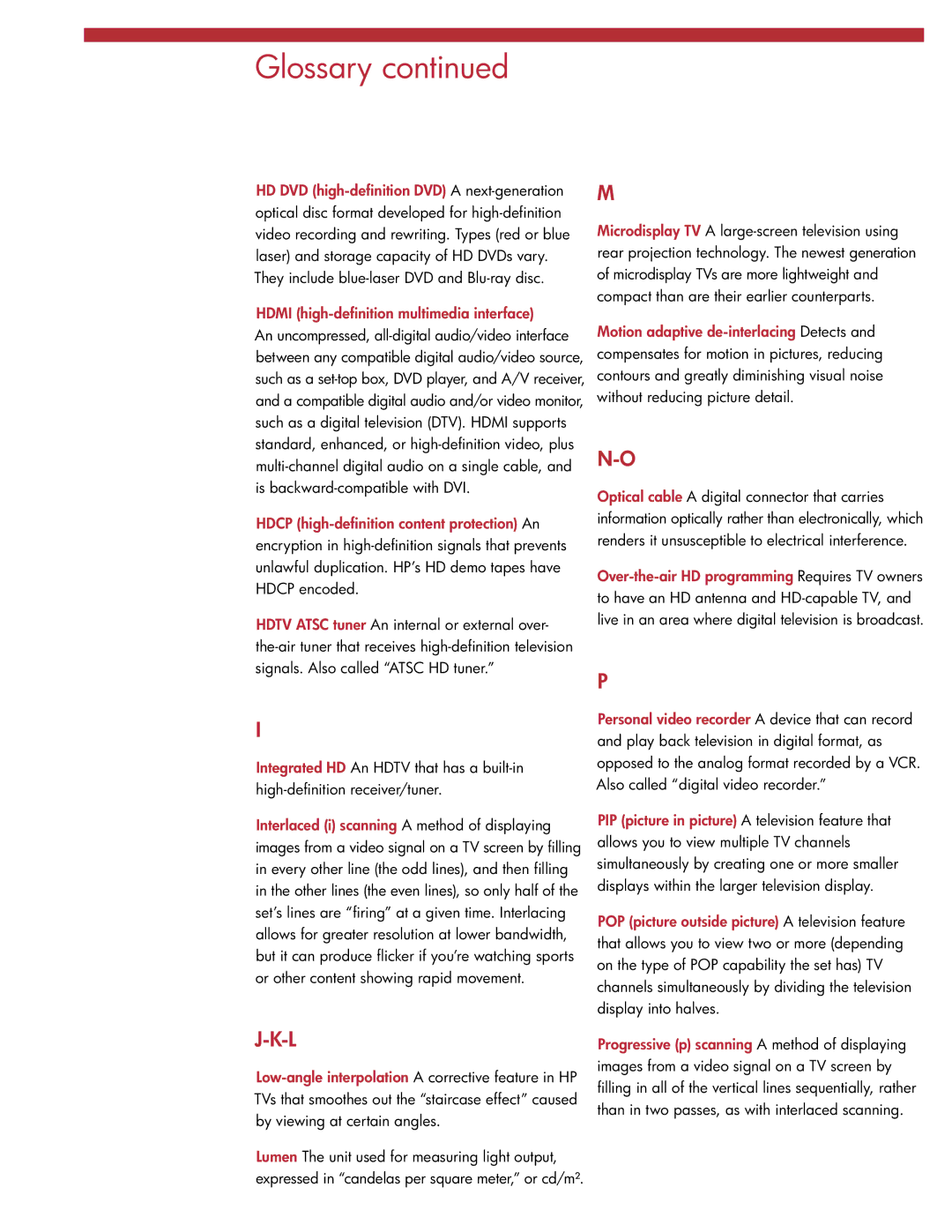Glossary continued
HD DVD
HDMI (high-definition multimedia interface)
An uncompressed,
HDCP
HDTV ATSC tuner An internal or external over-
I
Integrated HD An HDTV that has a
Interlaced (i) scanning A method of displaying images from a video signal on a TV screen by filling in every other line (the odd lines), and then filling in the other lines (the even lines), so only half of the set’s lines are “firing” at a given time. Interlacing allows for greater resolution at lower bandwidth, but it can produce flicker if you’re watching sports or other content showing rapid movement.
M
Microdisplay TV A
Motion adaptive
Optical cable A digital connector that carries information optically rather than electronically, which renders it unsusceptible to electrical interference.
P
Personal video recorder A device that can record and play back television in digital format, as opposed to the analog format recorded by a VCR. Also called “digital video recorder.”
PIP (picture in picture) A television feature that allows you to view multiple TV channels simultaneously by creating one or more smaller displays within the larger television display.
POP (picture outside picture) A television feature that allows you to view two or more (depending on the type of POP capability the set has) TV channels simultaneously by dividing the television display into halves.
Lumen The unit used for measuring light output, expressed in “candelas per square meter,” or cd/m².
Progressive (p) scanning A method of displaying images from a video signal on a TV screen by filling in all of the vertical lines sequentially, rather than in two passes, as with interlaced scanning.
